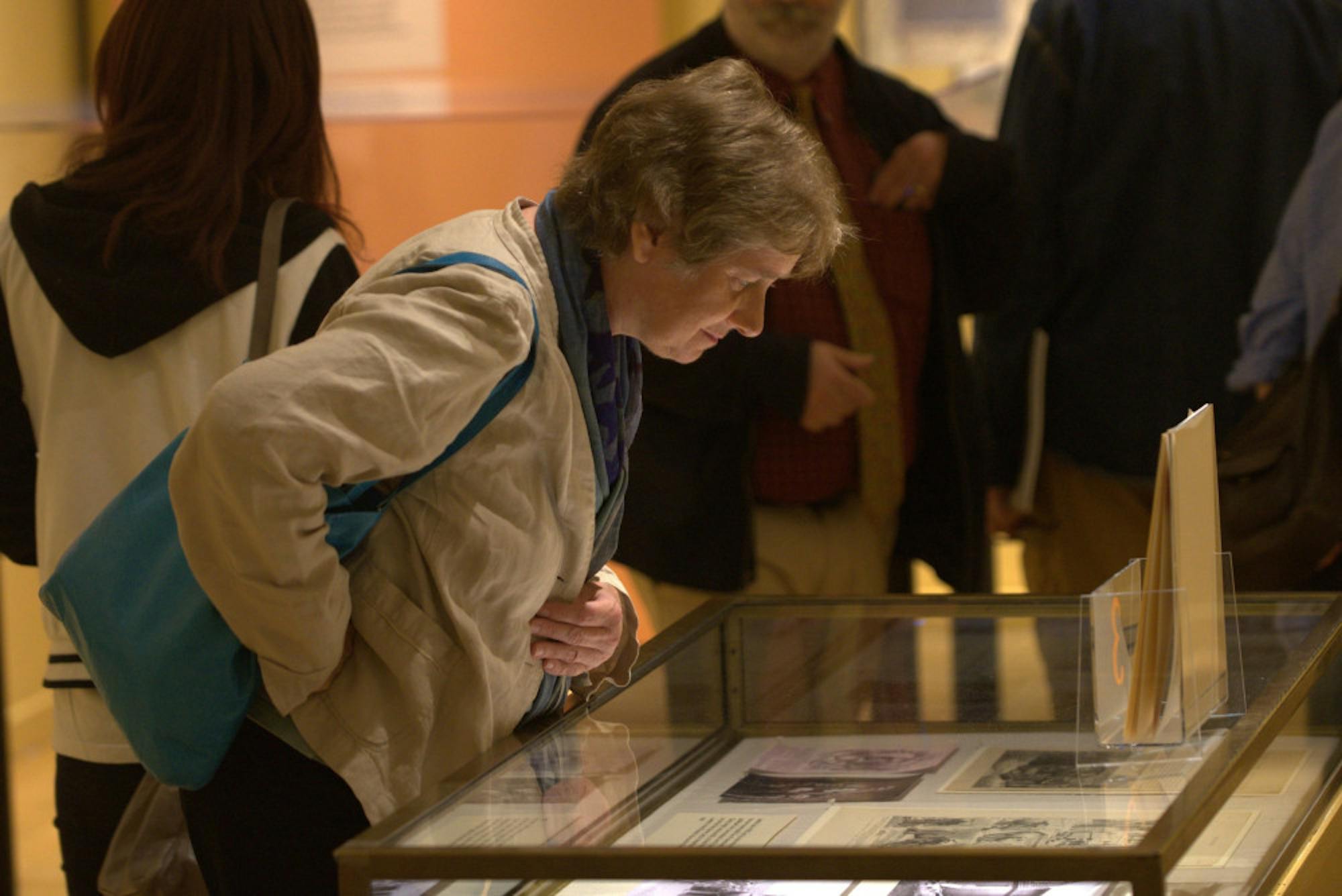With a robust resume that boasts piggyback rides for the likes of Winston Churchill and Theodore Roosevelt (literally carrying the fate of the world on his back), a life memorialized in Walt Disney movies and a name that has permanently altered dictionaries and fast-food orders everywhere, it is easy to say that Jumbo has left an elephantine mark on the world.
But at his time at Tufts, Jumbo has become much more influential than even "The Greatest Show on Earth" could have anticipated, acting as a source of inspiration and a rallying figure for generations of Tufts’ students who proudly refer to themselves as “Jumbos” in his honor.
This year marks the 125th anniversary of Tufts’ adoption of Jumbo the elephant as its mascot. While his audience has changed over the years, the multifaceted figure still elicits the strong sense of pride and respect that he did in crowd-filled arenas during his glory days in Barnum and Bailey’s circus.
The university will pay homage to the revered elephant in a number of ways throughout the upcoming year. Currently it is presenting an art exhibit entitled “Jumbo: Marvel, Myth, Mascot.” The exhibit, curated by Professor of Art History and Museum Studies Andrew McClellan, showcases Jumbo’s 25-year life -- from his humble roots in Ethiopia, to a stint as a beloved London-based zoo-animal, to his rise to stardom as P.T. Barnum’s four-legged grand finale.
“The goal was to bring together objects and images to tell the story of Jumbo across his various lives,” McClellan said. “While the story [of Jumbo’s life] was well-known, there had never been any attempt to bring together the extraordinary images that tell his story in a new, fresh way ... it all began to come together by the 125th anniversary.”
The university approached McClellan with an offer to curate the show because of his known interest in Jumbo’s life and his authority as a Jumbo expert. McClellan’s process of gathering research began incidentally: He recalled collecting information on the elephant around seven or eight years ago for his own personal interest. In 2011, he published an article about Jumbo and Tufts’ Barnum Museum of Natural History, and the release date for the book he authored on Jumbo is set to coincide with the exhibit and the anniversary, according to a May 21, 2014 article on TuftsNow.
While the exhibit is primarily a tribute to the animal that has become almost inextricably linked to the university, sophomore and Visitor Service Ambassador Olivia Meyer-Jennette said she believes there is a greater value in revitalizing community engagement in Jumbo.
"I've noticed personally as a student at Tufts ... the idea of school spirit isn't huge here," Meyer-Jennette said. "But I think that people are really proud to go to Tufts and proud to be here on this campus and people really enjoy it so I think that ... a lot of people identify with Jumbo. We call ourselves Jumbos. It's good for people to know the story."
According to Meyer-Jennette, the exhibit also allows students to interact with art in a more direct manner than what is often associated with art exhibits, leading to higher student interest.
"There have definitely been more people coming through [the gallery with the Jumbo exhibit]," Meyer-Jennette said. "I hope it's kind of raising an awareness of the gallery on campus because in the past, I've met a lot of students who didn't know we had an art gallery ... a lot of students and a lot of alumni ... [have] had a lot of interest ... there are lots of facts that I didn't know about our mascot ... and it's an interesting story."
While the exhibit will be running through Dec. 7, Tufts has also worked to procure a more enduring monument to Jumbo. A new bronze Jumbo statue financed by Former Vice President of Operations Dick Reynolds (LA '67) will be erected outside of Barnum Hall sometime during the late fall. Reynolds said he was disappointed by the previous statue's inaccurate representation of Jumbo. According to the TuftsNow article, he decided that in lieu of a relatively tiny sculpture, a monolithic monument of Jumbo proportions would be more appropriate.
Last year, a committee comprised of faculty, staff and students met to decide on whom to give the commission. Headed by McClellan, the group initially conducted independent research on artists with prior experience in large-scale bronze sculptures of animals. According to TuftsNow, after preliminary discussions, they created a limited competition in which they invited artists to submit design ideas.
Tufts' Executive Director of Advancement Communications and Services Christine Sanni described how important it was to commission an artist with experience in this medium.
“Steven Whyte was chosen by the committee because of his experience creating large-scale bronze models," she said. "The process of building the sculpture is labor intensive. It involves creating a model of the sculpture in one material, covering that model in clay and then creating the features, then creating a mold from the clay model and finishing it in bronze."
Jumbo stole the hearts of his visitors at the London zoo, which fought to keep him in England. After his trip to the United States, along with 400 significantly smaller European immigrants, he commanded the attention of audiences across the continent. Even in present times, the legacy of Jumbo endures through the fresh sets of students who arrive on campus annually, ready to make an impact on the world around them and seize the day by the tusks.
“Jumbo as a mascot is almost as old as the university itself," Sanni said. "Recognizing an anniversary like this one gives us an opportunity, as a community, to look back on our past and take pride in the progress of the university."
University honors mascot through art

Visitors to the exhibit can view the history of Jumbo, who was made Tufts' official mascot 125 years ago this year.





